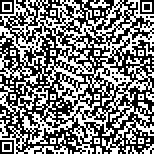下载中心
优秀审稿专家
优秀论文
相关链接
摘要

快速发展对流RDC(Rapid Developing Convection)是灾害性天气发生的先兆.如何利用卫星遥感技术快速捕捉到RDC信息,是天气临近预报非常关注的内容.随着中国FY-2F气象卫星快速扫描工作模式的业务化,可提供时间分辨率为6 min,空间分辨率为5 km的多通道快速扫描数据,这使得利用卫星检测RDC业务化成为可能.本文根据FY-2F多通道快速扫描数据的特点,设计了一种快速发展对流检测方法.该方法主要根据云顶快速降温率CTC(Cloud Top Cooling rate)的多通道判识,设计了带有3个测试的CTC过滤器,过滤之后得到每个RDC的局部亮温极小值点,然后以该点为中心对周围像元进行漫水填充,得到快速发展对流体.对2013年8月(94°E—129°E,11°N—26°N)的扫描数据进行试验验证,结果表明,本文方法对RDC检测的准确率POD、误报率FAR和临界成功指数CSI分别为0.89、0.15和0.77,能够较为准确地检测快速发展对流.
In recent years, the time and spatial resolution of satellites have been effectively improved with the development of satellite remote sensing technology. Thus, research on convection has focused on improving the detection of Convective Initiation (CI) and Rapidly Developing Convection (RDC), which is indicative of impending disastrous weather conditions. In this study, we aim to identify ways to utilize satellite remote sensing technology in capturing RDC information for RDC detection. RDC detection using satellite data is possible with the operation of the rapid scan mode of Chinas meteorological satellite FY-2F. This satellite provides multi-channel rapid scan data with a time resolution of 6 min and a spatial resolution of 5 km.A method for RDC detection is designed according to the characteristics of the multi-channel rapid scan data of the FY-2F satellite. A multi-channel identification of Cloud-Top Cooling rate (CTC) and CTC filtration with three tests (elimination of cloud movement, acquisition of BT minimum value, and filtration according to identified RDC) are also performed. After the conduct of the three tests, the local BT minimum value of RDC can then be filtered, and the surrounding pixels can be filled using the flood fill method to determine the RDC. The developed method is then employed in RDC detection using the scan data of the 94°E—129°E, 11°N—26°N area in August 2013. Artificial statistics with a visual analysis of the accuracy rate of RDC detection is used in the experiment. Experimental results show that the POD, FAR, and CSI of RDC detection using our method are 0.89, 0.15, and 0.77, respectively. In this study, we propose a method for RDC detection and apply the rapid scan data of the FY-2F satellite. The method is proven effective in accurately detecting RDC. However, the 15% false alarm rate of our method indicates the need to narrow down the scope of RDC identification conditions. In the future, we will focus on identifying ways to use the 1 km VIS channel data of the FY-2F satellite to achieve highly accurate detection.

